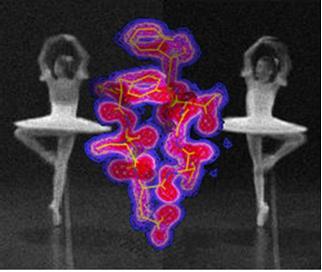
Traditionally in science, the "best" observations are those with the largest signal from the most tightly controlled system. Like bridal photos, the results of tightly controlled experiments are not always exciting. In a wide range of phenomena – from the dance of proteins during their function, to the breaking of molecular bonds on the femtosecond scale – tight control is neither possible, nor desirable. Modern data-analytical techniques extract far more information from random sightings than usually obtained from set-piece experiments.
I will describe on-going efforts to extract structural and dynamical information from noisy, random snapshots. Examples will include YouTube videos, the structure and conformations of molecular machines such as the ribosome, and the ultrafast dynamics of bond-breaking in small molecules like nitrogen.
Less can be more, but only if there is plenty of it.
*In collaboration with: A. Dashti, R. Fung, A. Hosseinzadeh, P. Schwander (UWM); J. Frank et al. (Columbia), P. Bucksbaum et al. (Stanford).
Sponsors
A. Ourmazd *
University of Wisconsin, Milwaukee, WI

